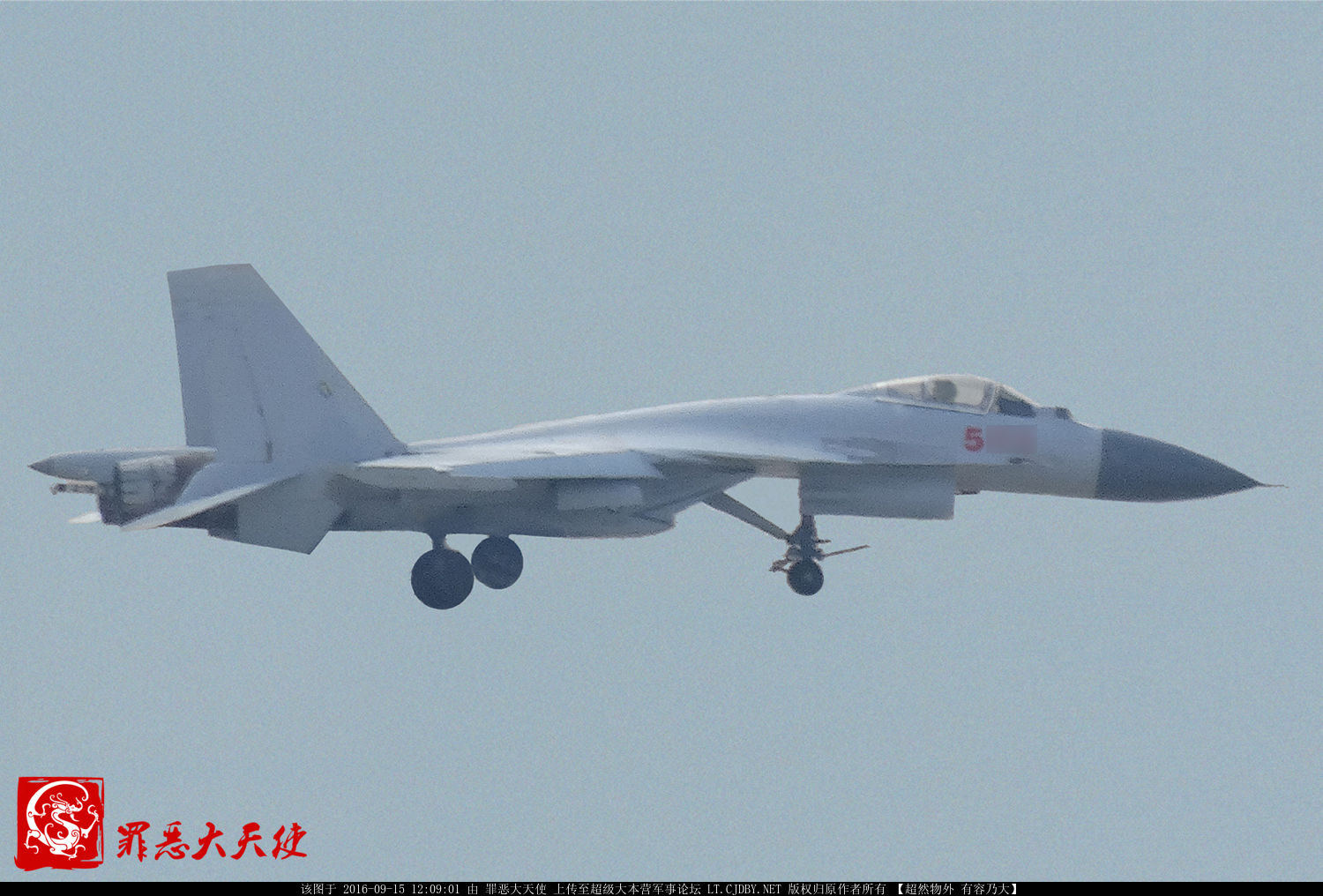


New imagery shows that the China’s carrier-borne fighter, the J-15, will receive major upgrades, which point to gains in not just China’s engine-making but overall carrier fleet.

The J-15 is derived from the Russian Su-33 (itself developed from the Su-27 fighter), and is currently in limited production by Shenyang Aircraft Corporation. It is used by the People’s Liberation Army Navy (PLAN) on its sole aircraft carrier, the Liaoning.
In September 2016, images of an upgraded J-15, the “J-15A”, emerged on the Internet, showing significant upgrades to its engines and flight performance. The plane makes use of domestically produced WS-10H turbofan engines, distinguished by a squarish, silver afterburner nozzle. While some J-15 prototypes were fitted with WS-10 turbofan engines, all production J-15s presently operating off the Liaoning aircraft carrier use the Russian AL-31 turbofan (which has a dark-colored afterburner nozzle). If future J-15As use the WS-10H as a power plant, it would indicate a triumph for China’s emerging aviation engine industry, which has long been a weakness. Another likely upgrade is the installation of an Active Electronically Scanned Array (AESA) radar, which has improved resolution, multi-target ability, and resistance to jamming.

However, perhaps the most significant evident upgrade is the reinforced landing gear on theJ-15A’s nosewheel, with the extender in particular much larger. Strengthening the nosewheel is necessary for the plane to operate on carriers with catapults; the catapult’s aircraft launch bar pulls the J-15 by its nosewheel when the carrier catapult accelerates the fighter during takeoff. Also, the holdback bar needs to be attached to the rear of the nosewheel prior to catapult launch, in order to prevent premature movement.

While neither the Liaoning nor China’s first domestically built aircraft carrier, the CV-17, have catapults, China’s third or fourth aircraft carrier would likely possess them, with the J-15’s new upgrade a further indicator of such plans. A catapult launch capability would be significant. It would give the J-15 additional range and payload, but more importantly, it means the ships could also carry fixed wing Airborne Early Warning and Control (AEWC), cargo/tanker and Anti-Submarine Warfare (ASW) aircraft, which require catapults to launch. Larger AEWC and ASW aircraft, compared to the Liaoning’s current helicopter fleet, would not just increase the combat power of the J-15s, but of the entire Chinese carrier group.
You may also be interested in:
China’s New Carrier Gets a Ski Ramp
China Builds Power Projection Force with New Cargo Plane and Warship
China’s First Homemade Carrier Moves Forward
Happy Chinese New Years From China’s New Aircraft Carrier
China’s Aircraft Carrier Fighters Go Operational?